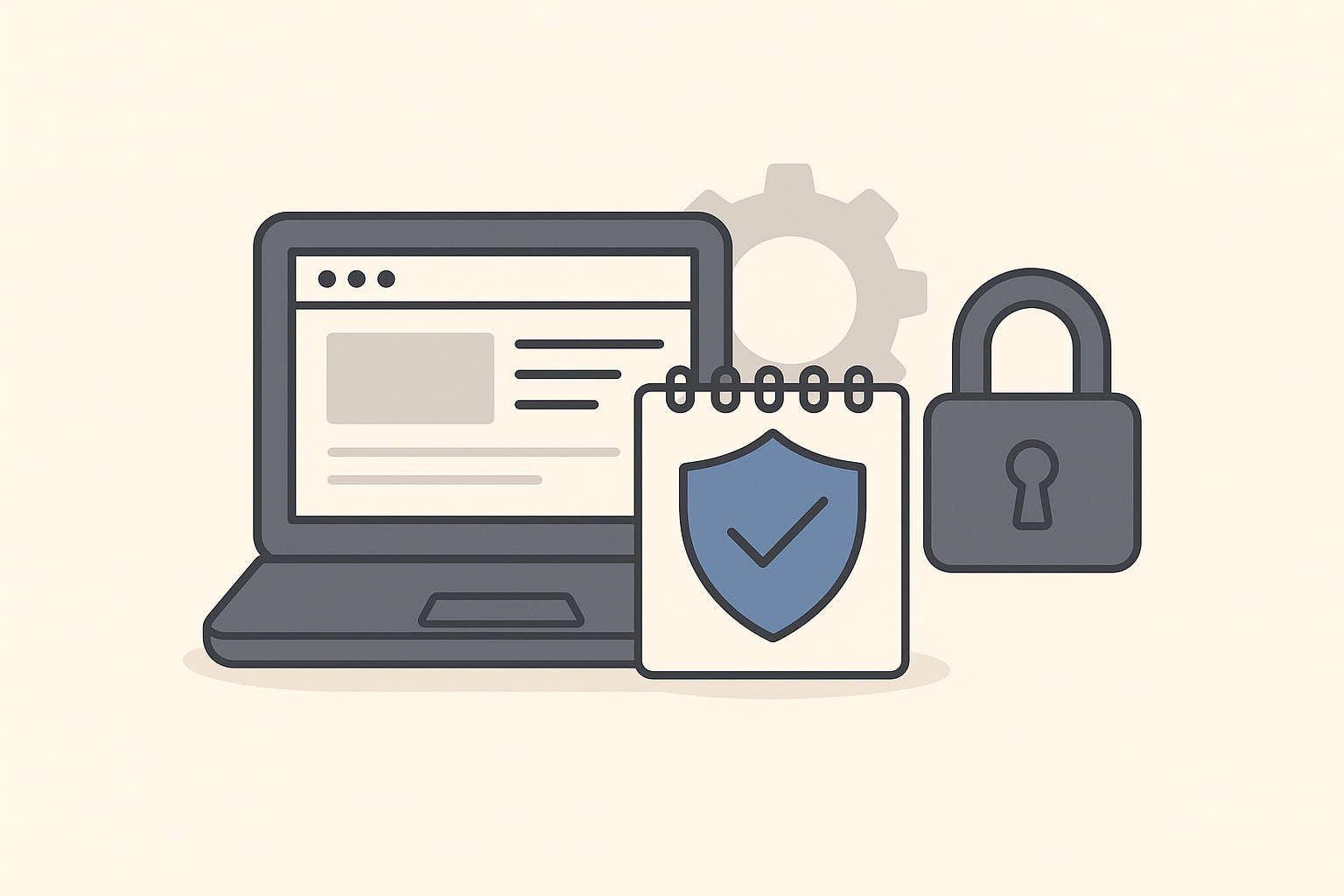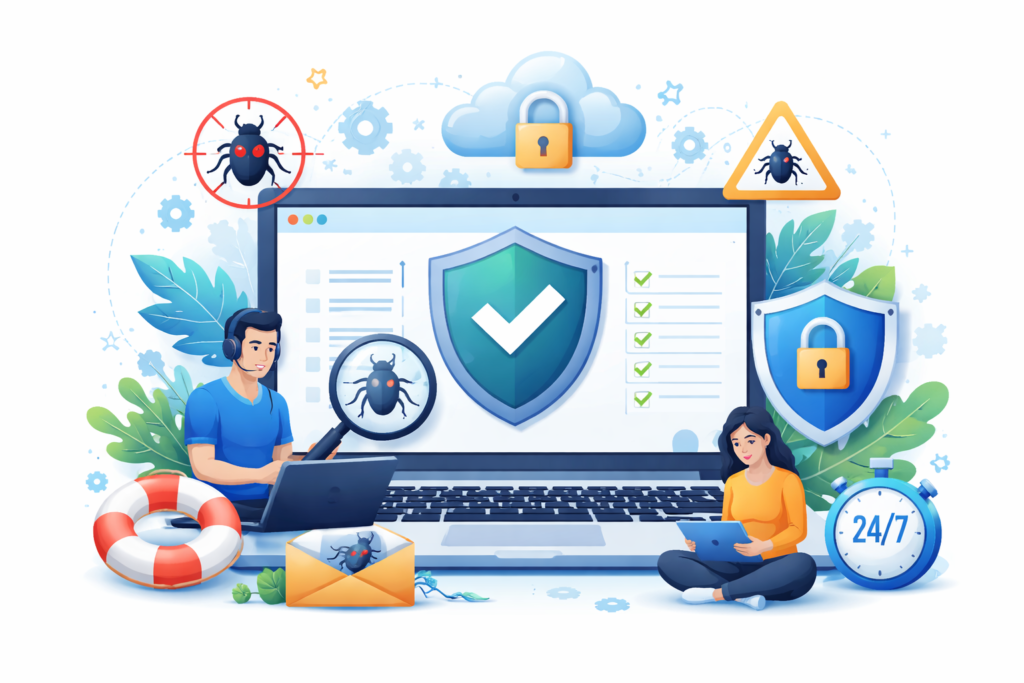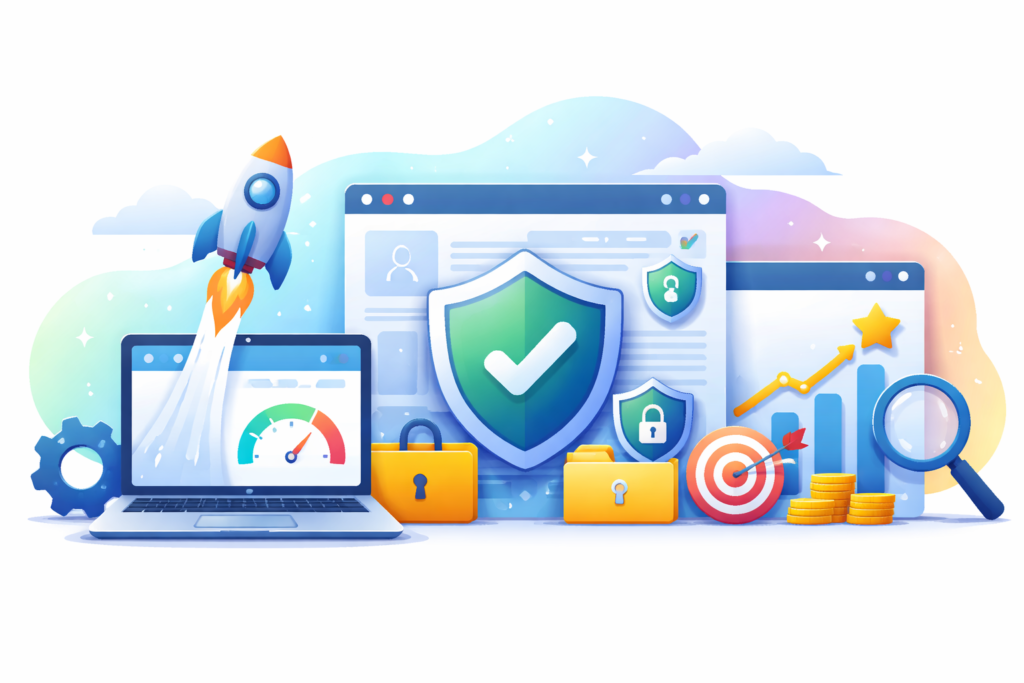Website security is no longer optional in today’s digital era. Every website owner faces threats from hackers, malware, and data breaches. Implementing Website Hardening techniques ensures your online platform is resilient, secure, and trustworthy. By strengthening your website’s defenses, you not only protect sensitive data but also enhance user confidence and website performance. This guide will explore the most effective strategies to fortify your website and prevent potential vulnerabilities from being exploited.
Introduction
In the modern digital landscape, website security is one of the most critical concerns for businesses and individuals alike. With cyber threats evolving rapidly, it has become increasingly important to implement proactive measures to protect your online assets. This is where Website Hardening plays a pivotal role. At FixHackedSite, we understand the significance of securing websites against potential attacks, ensuring optimal performance, and maintaining trust among users.
Website hardening refers to a set of techniques, practices, and tools aimed at making your website resistant to cyber threats. Unlike reactive security, which addresses breaches after they occur, hardening focuses on preventive measures that minimize vulnerabilities before attackers can exploit them. These measures range from securing server configurations to implementing strong authentication systems, all contributing to a robust security posture.
Investing in website hardening is not just about protecting your data; it is about preserving your brand’s reputation, safeguarding your clients’ information, and ensuring uninterrupted service. As hackers become more sophisticated, relying solely on basic security measures such as firewalls or antivirus programs is no longer sufficient. A comprehensive website hardening strategy combines multiple layers of security, continuous monitoring, and adherence to best practices to create a secure and resilient online presence.
Understanding the Importance of Website Hardening
Website hardening is essential for every online platform, regardless of its size or purpose. With cyberattacks becoming increasingly sophisticated, a single vulnerability can lead to devastating consequences, including data theft, financial loss, and reputational damage. By implementing website hardening measures, organizations can significantly reduce the likelihood of unauthorized access and minimize potential risks.
In addition to protecting sensitive information, website hardening also ensures compliance with industry standards and regulatory requirements. Many businesses handle personal, financial, or health-related data, making it crucial to follow strict security protocols. Hardening practices not only prevent breaches but also demonstrate a commitment to data protection, which can build trust with clients and stakeholders.
Moreover, website hardening positively impacts website performance and reliability. Secure websites are less prone to downtime caused by malicious attacks, which means users can access services without interruptions. By addressing vulnerabilities proactively, website owners can maintain a seamless user experience while safeguarding their digital assets from potential threats.
Secure Server Configuration
One of the first steps in website hardening involves securing the server on which your website operates. The server is the backbone of any website, and misconfigurations can expose sensitive data or provide attackers with an entry point. Ensuring that your server is properly configured is crucial for minimizing security risks.
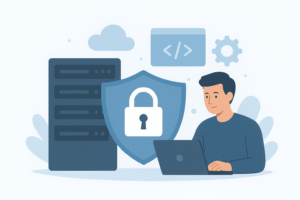 Key aspects of secure server configuration include disabling unnecessary services, enforcing strong permissions for files and directories, and implementing security-focused server software. Regularly updating server software and applying patches can also prevent attackers from exploiting known vulnerabilities. A secure server foundation is the first line of defense against potential cyber threats.
Key aspects of secure server configuration include disabling unnecessary services, enforcing strong permissions for files and directories, and implementing security-focused server software. Regularly updating server software and applying patches can also prevent attackers from exploiting known vulnerabilities. A secure server foundation is the first line of defense against potential cyber threats.
Additionally, using secure protocols such as HTTPS and enforcing encryption standards for data transmission can prevent interception and tampering. Monitoring server logs for unusual activity and implementing automated security tools further enhances server security. By focusing on server hardening, website owners lay a strong foundation for overall website protection.
Implementing Strong Authentication and Access Controls
Authentication and access management are critical components of website hardening. Weak passwords or improper user permissions can provide attackers with an easy way to gain unauthorized access to your website. Implementing strong authentication mechanisms ensures that only authorized users can access sensitive areas of your site.
Techniques such as multi-factor authentication (MFA) add an extra layer of security, requiring users to verify their identity using multiple methods. Additionally, role-based access control ensures that users have permissions appropriate to their responsibilities, minimizing the risk of accidental or intentional misuse of sensitive data.
Regularly reviewing user accounts, revoking inactive accounts, and monitoring login attempts are essential practices for maintaining access control integrity. By combining these measures, website owners can significantly reduce the risk of breaches while maintaining efficient and secure user management.
Web Application Firewall (WAF) Implementation
A Web Application Firewall (WAF) is an essential tool in website hardening, acting as a barrier between your website and potential threats. It monitors incoming traffic and blocks malicious requests before they can reach your server. Unlike traditional firewalls, a WAF focuses on the application layer, detecting and mitigating attacks such as SQL injection, cross-site scripting (XSS), and other common exploits.
Implementing a WAF not only prevents direct attacks but also provides valuable insights into traffic patterns and potential vulnerabilities. Modern WAFs often include machine learning capabilities, allowing them to adapt and respond to emerging threats automatically. By analyzing incoming traffic and identifying abnormal behavior, WAFs can prevent attacks that traditional security measures may overlook.
Additionally, using a WAF can improve overall website performance and reliability. By filtering out malicious requests, the server’s resources are dedicated to legitimate users, enhancing site speed and responsiveness. Integrating a WAF into your website hardening strategy ensures both security and improved user experience, making it a critical component of any robust website protection plan.
Securing Databases
Databases are the heart of any website, storing sensitive user information, transactional data, and critical content. If compromised, attackers can gain access to confidential data, leading to severe consequences. Database security is, therefore, a fundamental aspect of website hardening, focusing on preventing unauthorized access, data leaks, and corruption.
Best practices for securing databases include using strong passwords, restricting access to trusted IPs, and encrypting sensitive data both at rest and in transit. Regular database backups are also vital, allowing quick recovery in case of a breach or accidental data loss. Additionally, monitoring database activity for unusual queries or login attempts can help detect potential security incidents early.
Database security is not just about technical measures but also about policy and procedure. Implementing access controls, conducting periodic security audits, and keeping the database software up-to-date are critical steps. By combining these strategies, website owners can ensure that their data remains safe, supporting both the integrity and reliability of their online platform.
Plugin and Theme Security
For websites built on platforms like WordPress, Joomla, or Drupal, plugins and themes are often necessary for functionality and design. However, poorly coded or outdated plugins and themes can introduce vulnerabilities that attackers exploit. Website hardening requires careful selection, regular updates, and continuous monitoring of all third-party extensions.
It is essential to only use plugins and themes from reputable sources and to keep them updated to the latest versions. Developers frequently release patches to fix vulnerabilities, and ignoring these updates can leave your website exposed. Removing unused or obsolete plugins and themes also reduces the attack surface, further strengthening overall security.
In addition, monitoring for plugin vulnerabilities and conducting security scans can prevent exploitation. Tools that alert website owners about outdated or insecure plugins provide proactive protection. By combining vigilance with best practices, website owners can enjoy the benefits of extended functionality without compromising security.
SSL and HTTPS Encryption
Securing the data transmitted between your website and users is a critical component of website hardening. Implementing SSL certificates and enabling HTTPS ensures that all communication is encrypted, protecting sensitive information from interception by malicious actors. This layer of security is vital for online transactions, login credentials, and personal data.
SSL not only safeguards data but also builds trust with users. Modern browsers mark websites without HTTPS as “Not Secure,” which can negatively impact visitor confidence and engagement. Additionally, search engines prioritize HTTPS-enabled sites in search rankings, making encryption a dual-benefit strategy for both security and SEO.
Proper implementation involves choosing the right SSL certificate, configuring it correctly on the server, and redirecting all HTTP traffic to HTTPS. Regularly renewing certificates and performing security checks ensures ongoing protection. By prioritizing SSL and HTTPS encryption, website owners create a secure and trustworthy environment for visitors, reinforcing their commitment to online safety.
Regular Software Updates and Patch Management
Keeping all software components of a website up-to-date is one of the most effective methods of website hardening. Hackers often exploit known vulnerabilities in outdated software, making patch management critical for preventing breaches. This applies to content management systems, server software, plugins, themes, and even custom-built code.
Automating updates where possible can significantly reduce the risk of human error or oversight. Regularly reviewing change logs and understanding the impact of each update ensures that the website remains both functional and secure. Prompt application of security patches closes gaps before attackers can exploit them, maintaining a strong defense posture.
Additionally, maintaining a robust update strategy involves testing updates in a controlled environment before deployment. This reduces the risk of incompatibility or downtime while ensuring all security enhancements are active. By prioritizing software updates, website owners maintain resilience against evolving threats, creating a solid foundation for overall website hardening.
Continuous Malware Scanning
Malware can compromise a website’s functionality, steal sensitive data, and damage a business’s reputation. Continuous malware scanning is an essential part of website hardening, as it allows website owners to detect threats before they escalate into serious security incidents. By employing automated scanning tools, malicious code and suspicious activities can be identified in real-time.
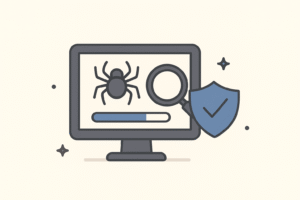 These scanners work by comparing your website files against known malware signatures, analyzing code for irregularities, and monitoring server behavior for unusual patterns. Detecting malware early ensures that corrective measures can be implemented promptly, reducing downtime and preventing data breaches. Many advanced scanning solutions also provide detailed reports, allowing website owners to understand vulnerabilities and address them proactively.
These scanners work by comparing your website files against known malware signatures, analyzing code for irregularities, and monitoring server behavior for unusual patterns. Detecting malware early ensures that corrective measures can be implemented promptly, reducing downtime and preventing data breaches. Many advanced scanning solutions also provide detailed reports, allowing website owners to understand vulnerabilities and address them proactively.
In addition to automated tools, manual inspections and code reviews can enhance malware detection. Periodically reviewing server logs and monitoring unusual spikes in resource usage can reveal hidden threats that automated scanners may miss. By combining automated and manual approaches, website owners create a robust system for protecting their online assets against malware attacks.
Content Security Policy (CSP) Implementation
A Content Security Policy (CSP) is a critical tool in website hardening that prevents attacks like cross-site scripting (XSS) and data injection. CSP defines which sources of content are trusted and instructs the browser to block any content that does not meet the policy criteria. By restricting scripts, images, and other resources to trusted sources, CSP minimizes the attack surface of your website.
Implementing CSP involves specifying allowed domains for scripts, stylesheets, and other resources while blocking inline scripts that could introduce vulnerabilities. Although it requires careful planning and testing, the benefits are substantial, significantly reducing the risk of client-side attacks. CSP can also prevent unauthorized data exfiltration by ensuring that sensitive information is only shared with trusted sources.
Regular monitoring and updating of CSP rules are essential as websites evolve. New functionalities, third-party integrations, or plugins may require adjustments to the policy. By maintaining a dynamic and carefully managed CSP, website owners can enhance website security, prevent malicious exploitation, and protect both their data and their users.
Implementing Secure Backup Solutions
Backups are the safety net of any website. Even with the best security measures, breaches, server failures, or human errors can occur. Secure backup solutions ensure that your website can be quickly restored to a functional state without significant data loss. This is a critical component of website hardening, providing peace of mind and continuity in the face of unexpected events.
Effective backup strategies involve creating multiple copies of website files and databases and storing them in secure locations, ideally offsite or in cloud storage. Encrypting backups adds an extra layer of protection, ensuring that sensitive information remains safe even if the backup is accessed by unauthorized parties. Additionally, regularly testing backup restorations verifies that the files are intact and recoverable.
Automation plays a key role in maintaining consistent backups. Scheduled backups reduce the risk of human oversight and ensure that the latest data is always protected. Combining secure storage, encryption, and regular testing creates a comprehensive backup solution, allowing website owners to respond quickly to attacks or data loss while minimizing downtime and operational impact.
Monitoring Website Traffic and Activity
Monitoring website traffic is a proactive measure in website hardening, helping detect suspicious activity before it escalates into an attack. By analyzing patterns in user behavior, login attempts, and server access logs, website owners can identify potential threats and respond promptly. Continuous monitoring ensures that vulnerabilities are discovered early and mitigated effectively.
Tools such as intrusion detection systems (IDS) and security information and event management (SIEM) platforms provide detailed insights into website activity. These tools can flag anomalies like repeated login failures, unusual IP addresses, or irregular data requests. Monitoring also helps in identifying performance issues caused by malicious activity, allowing for swift corrective actions.
In addition to automated monitoring, combining analytics with manual review improves threat detection. Reviewing historical data, correlating unusual events, and conducting periodic audits enable a comprehensive understanding of website health. By implementing robust monitoring practices, website owners maintain control over their online environment, enhancing both security and operational stability.
Minimizing Attack Surfaces
Reducing the number of potential entry points for attackers is a fundamental principle of website hardening. Every unnecessary feature, open port, or outdated service increases the attack surface and the risk of exploitation. Minimizing these elements ensures that the website is easier to secure and monitor effectively.
Strategies for minimizing attack surfaces include disabling unused services, removing outdated code, and limiting access to administrative areas. Carefully selecting plugins and extensions, while keeping only those that are essential, also reduces exposure. Each active component of a website should be evaluated for necessity and potential risk.
By continuously reviewing and updating the website environment, owners can ensure that vulnerabilities are minimized. This proactive approach not only reduces the likelihood of attacks but also simplifies maintenance and monitoring. Maintaining a lean, efficient, and secure website is a key component of a successful website hardening strategy.
Securing Administrative Panels
Administrative panels are the control centers of any website, granting access to sensitive configurations, user data, and backend functionality. If compromised, attackers can take full control of the website, making the security of these panels a top priority in website hardening. Implementing strong authentication, restricted access, and monitoring measures ensures that only authorized personnel can access administrative areas.
Techniques such as enforcing multi-factor authentication (MFA), using complex passwords, and limiting login attempts significantly enhance admin panel security. Additionally, IP whitelisting allows access only from trusted locations, reducing the likelihood of unauthorized entry. Periodic audits of user roles and privileges ensure that permissions remain aligned with organizational requirements and security policies.
Regular monitoring and logging of admin panel activity also provide valuable insights into potential security breaches. Any suspicious login attempts or unusual changes can be flagged and investigated promptly. By combining these strategies, website owners can maintain control over their website’s backend and prevent attackers from exploiting administrative access points.
Log Management and Analysis
Proper log management is a critical component of website hardening, providing visibility into server and application activity. Logs capture valuable data, including user actions, server errors, and security events, which can be analyzed to detect and respond to potential threats. Without effective log management, website owners may miss early warning signs of attacks or breaches.
Analyzing logs regularly helps identify patterns of suspicious behavior, such as repeated failed login attempts, unusual IP addresses, or abnormal traffic spikes. Centralized log management tools can aggregate data from multiple sources, simplifying analysis and allowing for real-time alerts. This proactive approach enables swift mitigation of security incidents before they escalate.
Additionally, maintaining logs is essential for compliance with regulatory standards and industry best practices. Logs can serve as evidence in the event of a breach and assist in forensic investigations to determine the cause and impact of attacks. By implementing robust log management and analysis, website owners strengthen their overall security posture and gain valuable insights into their website operations.
DDoS Attack Mitigation
Distributed Denial-of-Service (DDoS) attacks are designed to overwhelm a website with excessive traffic, causing downtime and disrupting user access. Mitigating DDoS attacks is a crucial aspect of website hardening, ensuring that your website remains available even under malicious traffic conditions. Proactive strategies, monitoring, and protective technologies are essential for defense against these attacks.
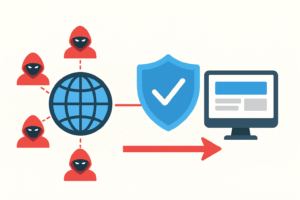 Techniques such as traffic filtering, rate limiting, and implementing content delivery networks (CDNs) help distribute incoming traffic, reducing the impact of DDoS attacks. Many modern hosting providers also offer specialized DDoS protection services, automatically detecting and mitigating malicious traffic before it reaches your server. Additionally, configuring firewalls to identify and block suspicious patterns enhances overall resilience.
Techniques such as traffic filtering, rate limiting, and implementing content delivery networks (CDNs) help distribute incoming traffic, reducing the impact of DDoS attacks. Many modern hosting providers also offer specialized DDoS protection services, automatically detecting and mitigating malicious traffic before it reaches your server. Additionally, configuring firewalls to identify and block suspicious patterns enhances overall resilience.
Effective DDoS mitigation requires a combination of technology and preparation. Regularly testing and updating your defense mechanisms, monitoring traffic trends, and having a response plan in place ensures that your website can quickly recover from attacks. By prioritizing DDoS protection, website owners can maintain service availability, safeguard user trust, and prevent operational losses.
Conducting Regular Security Audits
Security audits are systematic evaluations of a website’s defenses, identifying vulnerabilities and assessing the effectiveness of existing security measures. Conducting regular audits is a core principle of website hardening, allowing website owners to proactively address risks before they can be exploited by attackers. These audits involve reviewing server configurations, application code, access controls, and monitoring systems.
Automated security scanning tools can complement manual audits by detecting known vulnerabilities and misconfigurations. Penetration testing, performed by security experts, simulates real-world attacks to evaluate the robustness of defenses. The insights gained from audits guide website owners in implementing targeted improvements and ensuring compliance with industry standards.
In addition to technical assessments, audits provide opportunities to review policies and procedures. Evaluating user access, update schedules, and incident response plans ensures that all aspects of security are aligned with best practices. By making regular security audits a part of website maintenance, owners enhance their overall security posture and reinforce trust with users and stakeholders.
Conclusion
Website hardening is an ongoing, multi-layered process that safeguards websites against cyber threats, ensures data integrity, and enhances overall performance. By implementing techniques such as secure server configurations, plugin and theme management, SSL encryption, continuous monitoring, and DDoS mitigation, website owners create a resilient online presence capable of withstanding evolving cyberattacks.
At FixHackedSite, we emphasize that website security is not just a technical requirement but a business necessity. A secure website protects sensitive data, preserves brand reputation, and ensures uninterrupted service for users. Investing in website hardening is an investment in the long-term success and credibility of your online platform.
Ultimately, proactive security measures, continuous monitoring, and regular audits form the foundation of a robust website hardening strategy. By prioritizing these practices, website owners can confidently navigate the digital landscape, knowing their assets and users are well-protected. Website hardening is not a one-time effort but a continuous journey toward maintaining a safe and reliable online presence.
